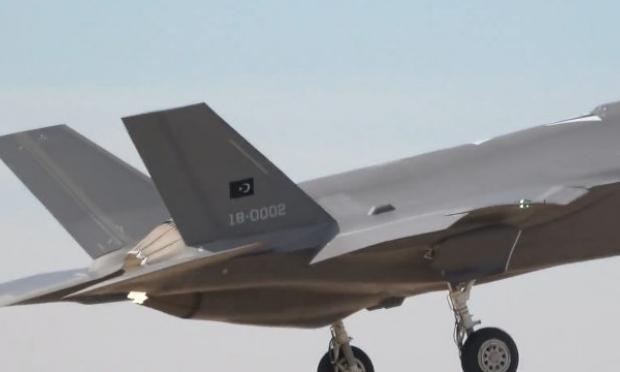The delegations of the US Department of Defense and the Turkish Ministry of National Defense may have agreed to continue consultations through the next meeting scheduled to take place in Ankara in the spring of 2023, but the last of the Turkish F-35A fighter jets that " seized' by the US Air Force, landed at Luke Air Force Base, Maricopa, Arizona.
The stealth fighter has serial number 18-0002. It is the number that proves that this fighter was built and intended for the Turkish Air Force.
By the time Turkey was kicked out of the F-35 JSF program, Lockheed Martin had produced six fighters for Turkey. Five of these have already been delivered and are performing flying work for the US Air Force. The aircraft, flight number 18-0002, will serve the 56th Fighter Wing.
Luke Air Force Base is located adjacent to the city of Glendale near Phoenix, Maricopa County, Arizona. The 56th Fighter Wing is supposed to be the largest air force wing in the world. Future pilots of both the F-16 Fighter Falcon and the F-35 Lightning II are actively trained here.

Dispute about money
Washington and Ankara are at loggerheads over money right now. As we have reported, Washington has made monetary claims against Ankara. The Pentagon wants to be compensated for the risks and losses suffered by Lockheed Martin, after the supply contracts of the Turkish companies that produce parts for the F-35s expired.
According to financial leaks, this has made the F-35 more expensive to produce. Washington's claim comes in response to a financial claim from Ankara. The Turks want to get the $1.4 billion invested in the 100 F-35 fighter jets they were supposed to get. After the US excluded Turkey from the F-35 program, Washington refused to return the amount.
It is recalled that Turkey bought the Russian S-400 air defense system. This was the reason Turkey was excluded from the F-35 JSF program. Turkey gave as an excuse that it bought the S-400s because they were cheaper than what the US offered for the Patriot air defense system.
Washington announced its intention to acquire the Turkish F-35 in mid-2020. These aircraft were never delivered to the Turkish Air Force. For a long time, the US pondered what to do with the fighters already produced. Various rumors sent them to various places, including Greece.
In addition to Luke Air Force Base as the recipient of some F-35 stocks for Turkey, Florida's Eglin Air Force Base is the other base that will operate the Turkish-made fighters.

The final version of the F-35 will not have a new engine after all
After being suspended following the crash of an F-35B in Fort Worth, Texas, last December, deliveries of F-135 engines from Pratt & Whitney were finally able to resume last month, following the development of a fix intended to solving a problem that could affect flight safety.
Indeed, at present, the F-35, developed by Lockheed-Martin, does not have all the capabilities listed in its specifications. This will apply to the so-called Block 4 version, which will have 66 new features that will require a more powerful engine… which has yet to be funded.
In the Block 4 version, the F-35 will be heavier, which "will require better thermal management and more power," explains General Eric Fick, head of the Pentagon's F-35 program.
One of the solutions considered was the integration of an engine from the AETP (Adaptive Engine Transition Program) which, launched in 2016, aimed to develop an adaptive cycle reactor (ACE), more economical and offering "significantly improved" thermal management. Two manufacturers were notified of a contract, including GE Aviation, for the XA100, and Pratt & Whitney, for the XA101.
Finally on March 10, Pentagon officials explained that Pratt & Whitney's proposal to upgrade the F-135 under the "Engine Core Upgrade" program was the "most cost-effective" option, in addition to providing assurance that it would work and for the three variants of the F-35.
"We were unable to fund the AETP program," said Air Force Chief Frank Kendall. And to add that, "the cost of GE's XA100 - $6 billion, equivalent to 70 F-35As - and doubts that it would work for all variants of the F-35, led to the retention of the F-135."



